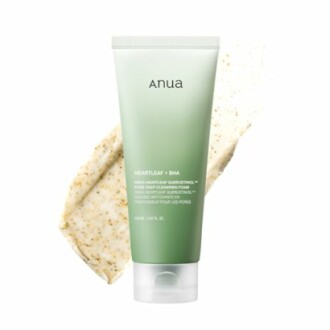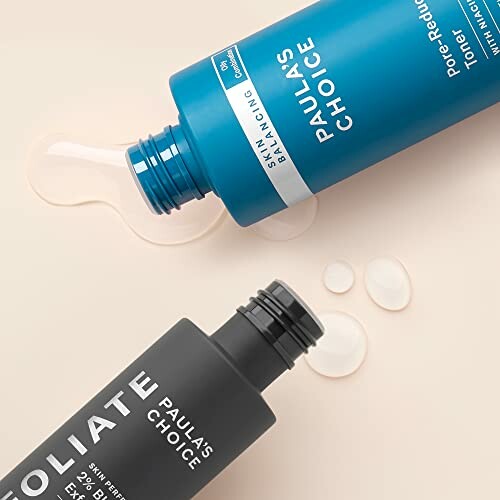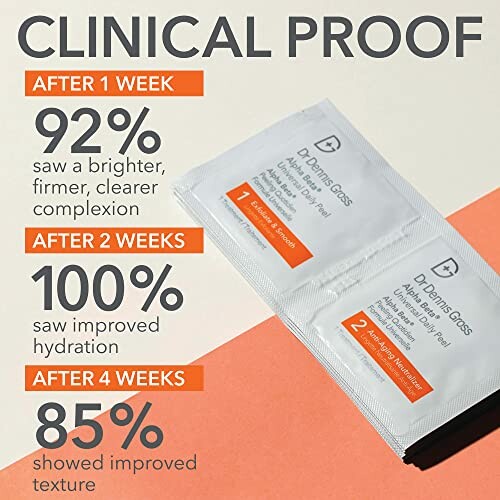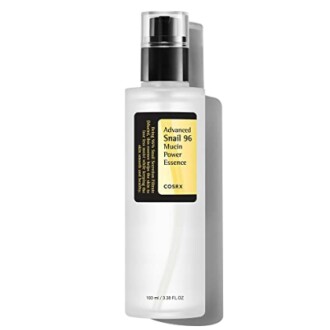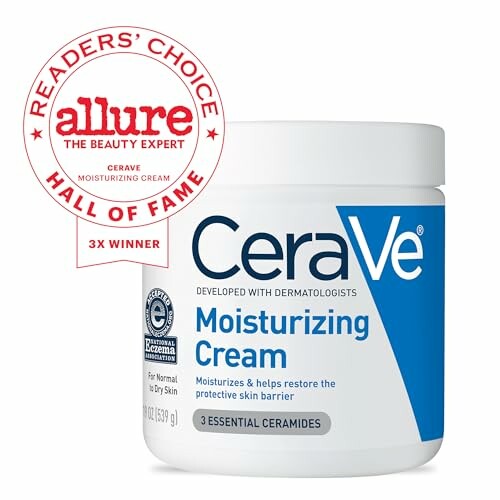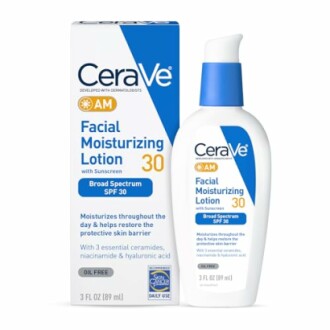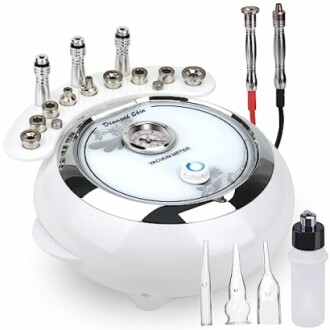
Best Skincare Routines 2025: A Straightforward Guide
Key Takeaways
- Simple but structured: Cleanser → Exfoliator (as needed) → Face Mask (once or twice a week) → Serum → Moisturizer → Sunscreen
- Core actives: Retinol, Niacinamide, Ceramides, Hyaluronic Acid, and SPF
- Monthly extras: Chemical peels and LED-based treatments to improve texture
- Personalization: Products keyed to specific skin type and concerns
- Barrier care: Ceramide-packed moisturizers for dryness and sensitivity
1. Cleansers: Gateway to a Clear Canvas
I’ve seen folks charge full speed into complicated serums and space-age gadgets. They often skip the first step—cleansing. That’s like trying to read a classic novel without flipping open the cover first—makes no sense. You want a neat start for everything else you plan to slap on later.
- ANUA Heartleaf Quercetinol Pore Deep Cleansing Foam sets things up by flushing out grime without draining the life out of your face.
- CeraVe Foaming Facial Cleanser steps in if your skin is the oily sort—plus it’s got those ceramides for barrier health.
- If dryness is your personal brand, La Roche-Posay Toleriane Purifying Foaming Cleanser keeps the squeak away but doesn’t starve your skin.
A no-nonsense cleanser prevents your pores from hoarding gunk. You want a mild lather—nothing that feels like scrubbing dishes. People are swearing by shorter ingredient lists, free of dyes and weird fragrances. Some folks double-cleanse with an oil-based wash first if makeup is thick or persistent. One cleanse might do the trick if your day was all couch and no eyeliner.
Breaking it down:
- Foaming Cleansers: Good for combination or oily skin
- Cream Cleansers: Ideal for dryness-prone types
- Oil Cleansers: Great for heavy makeup removal
Get it right and the rest of your routine stands a fighting chance. If you butcher this step, you’ll chase breakouts and dryness, swearing up and down about bad genetics—though it’s often just an overzealous bar of soap. Once you lock in a gentle cleanser, your face is primed for whatever bright ideas you plan next.
2. Exfoliators: Smoothing the Rough Edges
You ever see an old brick wall? That’s your face sometimes—piled-on layers of dead skin. Not a great look. Exfoliation chips away the debris so new skin sees the light.
- Paula’s Choice 2% BHA Exfoliant & Skin Balancing Toner travels into your pores—nice if you’re prone to blackheads or small bumps.
- The Ordinary AHA 30% + BHA 2% Peeling Solution picks up the slack if your skin’s thick enough to handle an at-home acid party once a week.
Do it too often and you’ll look like you forgot sunscreen at the beach—raw, irritated, and cursing your reflection. Keep your exfoliation nights spaced out. Skin cycling—exfoliate, rest, retinol, rest, or some variation—keeps everything under control.
Types of exfoliators:
- Chemical (AHA/BHA): Smooth texture, help with breakouts
- Physical (Scrubs, brushes): Immediate softness, but easy to overdo
Let your face be your guide. If you’re peeling like old paint or you’re feeling tender, you’re pushing it. A gentle approach, once or twice a week, is plenty. And remember: Exfoliants work better when your cleanser is mild. Don’t sabotage progress by swirling a harsh cleanser, then an intense peel, followed by—who knows—lava. That’s a recipe for trouble.
Healthy exfoliation reveals a fresher, more even surface. Pores can breathe, serums seep in better, you get a glow that’s less “gimmick” and more “I got some sense.” And if you get a little tingle, that’s normal—just don’t dance too close to the line of acid burn.
3. Face Masks: The Once-or-Twice-a-Week Reset
Ah, face masks. Some treat it like a spa event with candles and questionable music. Others do it half-asleep while binging late-night sitcoms. Regardless, the point stands: a decent mask can kick stale skin off the curb and brighten your day—literally.
- Dr. Dennis Gross Alpha Beta Daily Peel doesn’t exactly lounge around—it’s a peel and a half, giving you a more refined complexion.
- APRILSKIN Calendula Peel Off Mask peels like removing old wallpaper, but it’s oddly satisfying.
Types of masks:
- Clay/Charcoal: Draw out oil and gunk
- Sheet/Soothing: Pump in hydration and calm
- Peel-off: Exfoliate lightly, or sometimes a bit too enthusiastically
When or how often depends on your skin’s temperament. Some do clay masks once a week. Others prefer a more hydrating approach if dryness is their main event. The social media hype might push you toward 24-karat gold or snail goo, but go with something that fits your actual goals, not just what looks cool in a mirror selfie.
After a mask, your skin can feel prepped—ready to absorb the next step, be it a potent serum or a run-of-the-mill moisturizer. It’s a small pause in the daily grind, a chance to check in with yourself. Maybe read the news or watch some mindless cat videos.
Don’t treat masks like a cure-all. They’re more like that short shot of espresso in the middle of the day—extra oomph, but you still need a proper routine to anchor it. Overdo it, and you’ll strip your face. Aim for once or twice a week, skipping days you used a strong exfoliant. Give your skin some breathing room.
4. Serums: Targeted Help in a Small Bottle
Serums talk a big game in a little bottle. Sometimes they deliver. Sometimes it’s snake oil, but let’s not dwell on the heartbreak.
- COSRX Snail Mucin 96% Power Face Serum isn't a drama queen—it’s known for a gentle approach to moisture and radiance.
- Medicube PDRN Pink Peptide Serum claims to fortify your skin’s protective layers, smoothing it all out.
What do you want from a serum?
- Niacinamide: Banishes breakouts, reduces redness
- Hyaluronic Acid: Brings hydration, plumps fine lines
- Retinol: Targets wrinkles, improves texture
- Vitamin C: Brightens and tackles dull spots
A single product can’t fix everything. So, pick one or two that solve the biggest issue on your mind. Throw in multiple potent actives without pacing yourself, and you’ll be crying to your dermatologist about a meltdown of dryness, flaking, or something worse.
Application sequence matters. Serums go after cleansing (and possibly after a toner) but before moisturizer. This layering ensures the actives can sink in without competition from heavier creams. The payoff? Smoother texture, fewer breakouts, or maybe an even glow that makes you look awake at 7 a.m.
If you’re the type who gets bored, try rotating serums. Use a brightening one in the morning and a retinol-based formula at night—just not on the same night you do hardcore exfoliation. That’s a one-way ticket to Irritation City.
Serums are flexible, though. Keep them in your routine if they bring results. If your skin hasn’t changed for the better in a month or so, maybe that bottle’s better off in the empties bin. Move on. No use forcing a relationship that’s doomed.
5. Moisturizers: Shields for Your Barrier
Your skin’s barrier is a moody bouncer. Too harsh a climate, and it freaks out. Too many fancy actives, it shuts down or overreacts. Moisturizers step in as the peacekeeper, sealing in hydration so your face doesn't look like a stale pastry.
- CeraVe Moisturizing Cream offers a no-frills approach to dryness, packing ceramides and a texture that doesn’t suffocate.
- Vanicream Daily Facial Moisturizer tends to coddle sensitive skin—no nonsense, no extra fluff.
A good moisturizer:
- Traps hydration: Key for dryness and flaking
- Reinforces your barrier: Prevents irritants from sneaking in
- Smooths out your makeup application (if that’s your thing)
Tailor the texture to your skin type. If your cheeks behave like an oil well, you might prefer a lightweight gel-lotion. If your face is a desert, a thicker cream might be your ally. Slather it on morning and night—though if you use a morning moisturizer with SPF (like CeraVe AM Facial Moisturizing Lotion), you might skip the extra step of layering separate products.
Check your product labels. Watch out for heavy fragrances if you get rashes or dryness. Some folks like a moisturizer with niacinamide or hyaluronic acid, doubling down on benefits. Others keep it minimal to avoid messing with active serums.
Moisturizer is the final handshake for your skin at night—top off your retinol or acid-based routine with a comforting layer so you don't irritate yourself into oblivion. During the day, combine it with sunscreen if your moisturizer doesn’t have one built in. Keeps the dryness at bay, plus you won’t be that person who complains about fine lines while skipping the SPF step.
6. Sunscreens: Final Frontline of Protection
Neglect sunscreen and you’ll have a love letter from wrinkles far too soon. It’s not glamorous, but it saves you from more trouble than you can fathom.
- CeraVe AM Facial Moisturizing Lotion merges hydration with sun defense. Perfect if you hate extra steps.
- EltaMD UV Clear Face Sunscreen SPF 46 doesn’t clog up your pores, which is a solid deal for acne-prone folks.
Why bother?
- UV rays accelerate aging and trigger hyperpigmentation
- Blue light from devices and daily exposure can also chip away at your skin's glow
Aim for SPF 30 or higher. Reapply if you’re out in the sun or if the day has you sweating bullets. Some argue for chemical sunscreens, others for mineral. In 2025, there’s a trend of hybrid formulas bridging both. If a sunscreen leaves a chalky cast, try tinted versions or formulas specifically for deeper skin tones.
Keep an eye out for sunscreens with niacinamide or ceramides if you want synergy with your other products. Or keep it basic with a standard formula if layering is your jam. Just don’t ignore the daily reapplication. Many do the morning slather, then skip the rest of the day—big mistake. By lunchtime, you’re open season for those rays again.
Sunscreen is the unsung hero of any routine. You can have the greatest cleansers, serums, or moisturizers, but if you’re letting the sun beat on your unprotected face daily, you’re giving up easy ground to spots, lines, and possible long-term damage. Embrace that last step. It might not be flashy, but it’s the difference between future regrets and maintained complexion.
7. Putting It All Together: Daily Routines That Stick
Mornings can feel like wrestling with the snooze button. So keep it quick:
- Cleanse with something mild.
- Serum if you have one for daytime—like a brightening vitamin C.
- Moisturize lightly.
- Sunscreen with SPF 30 or more.
Come nightfall, maybe you’re worn out. So aim for:
- Cleanse again (two-step if you wore makeup).
- Exfoliate on certain nights—1–2 times a week. Don’t do it daily or you’ll regret it.
- Serum: Retinol or niacinamide for a targeted approach.
- Moisturizer: Lock it all in.
If you like wearing face masks, you can wedge them in once or twice a week, ideally on nights you’re not exfoliating. Otherwise, it might become a carnival of over-exfoliation.
Consistency is the secret. Try it for a few weeks, keep track of how your skin reacts, and only adjust if dryness or breakouts creep up. Jumping between products too often is a fast route to confusion. It’s a marathon, not a sprint—like waiting in line at the DMV, but with a better payoff.
Don’t let your bathroom cabinet turn into a cosmetics museum. Pick items you genuinely use. If something breaks you out, set it aside. If your skin glows from a particular routine, stick to it. A fancy label doesn’t guarantee better results—listen to your face.
In the morning, confirm you’ve not woken up to a surprise pimple or dryness. At night, rinse off the day’s grime. Keep it real. Not every product has to break the bank. The trick is a sequence that suits your lifestyle and your skin’s temperament. If you get lazy once in a while, so be it—just don’t let “once in a while” become permanent.
8. Professional Extras and FAQs
Sometimes, you want to bring the big guns to the party. That might be chemical peels at a clinic, microdermabrasion gadgets, or LED masks for an at-home experience that feels borderline futuristic.
- The 3-IN-1 Microdermabrasion Machine aims to gently polish off dead skin, smoothing texture. Not everyone’s cup of tea, but for some, it’s part of a monthly refresh.
- In-clinic treatments like microneedling or mild chemical peels can fast-track progress if you’re chasing that even-toned, firm look.
FAQs
How often should I exfoliate?
Most skin types manage well with 1–2 times a week. Listen to your face—if it’s irritated, pull back.Do I need a different cleanser for morning and night?
Not really. You can use the same gentle formula. If you wore heavy makeup, double-cleanse at night.Why is sunscreen vital if I’m indoors all day?
Windows don’t block all UV rays. Plus, prolonged device use can contribute to skin damage. A light layer of SPF helps keep your skin resilient.Can I use multiple serums at once?
Yes, with caution. Layer them in order of thickness, but don’t toss on retinol, AHA, and vitamin C all at once. Go slow to avoid angry skin.Is a face mask necessary?
Not essential, but it can be a helpful extra. Masks boost hydration or draw out impurities. They’re icing on the cake, not the main course.
Professional add-ons can boost results, but you don’t have to break the bank. A solid daily routine and consistent SPF usage remain the backbone of a well-balanced regimen. If you want to dabble in advanced treatments, do your homework. Your skin might thank you—or it might need a break. Just keep it steady and keep it real.
That’s the story. It’s not flashy, but it’s how you save face—literally.
